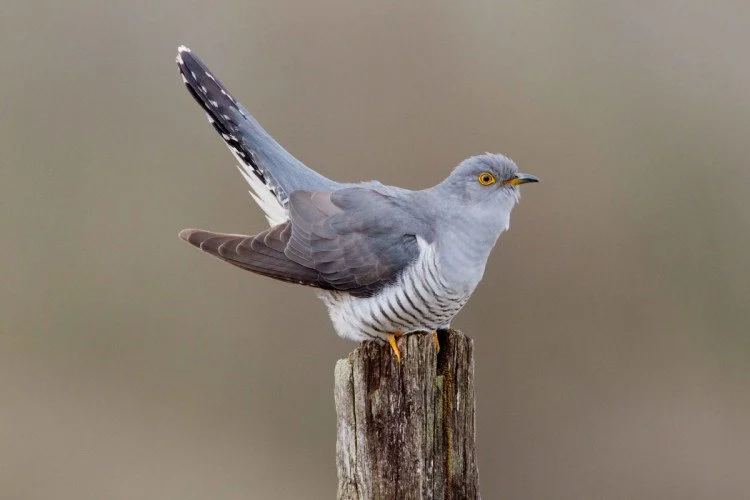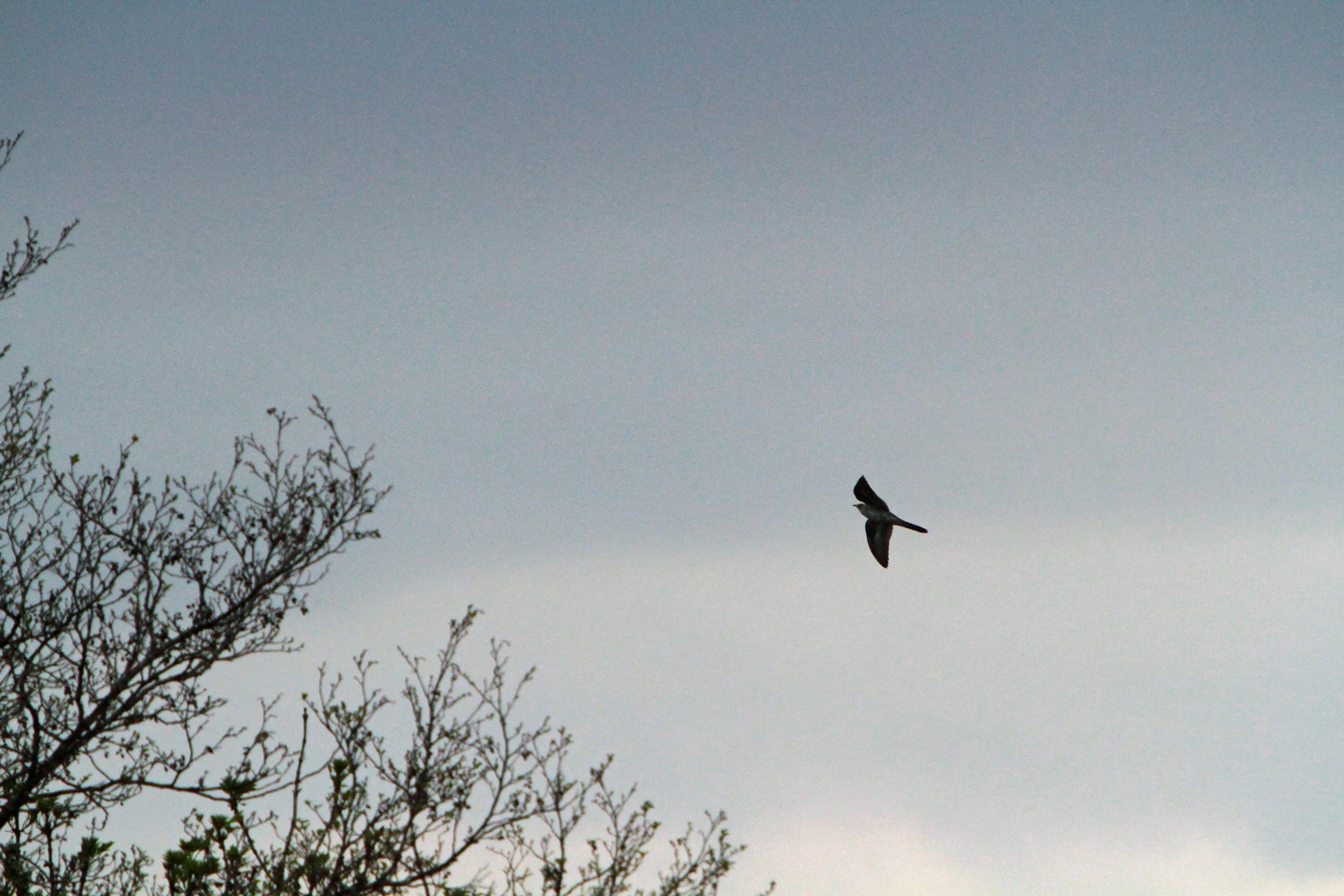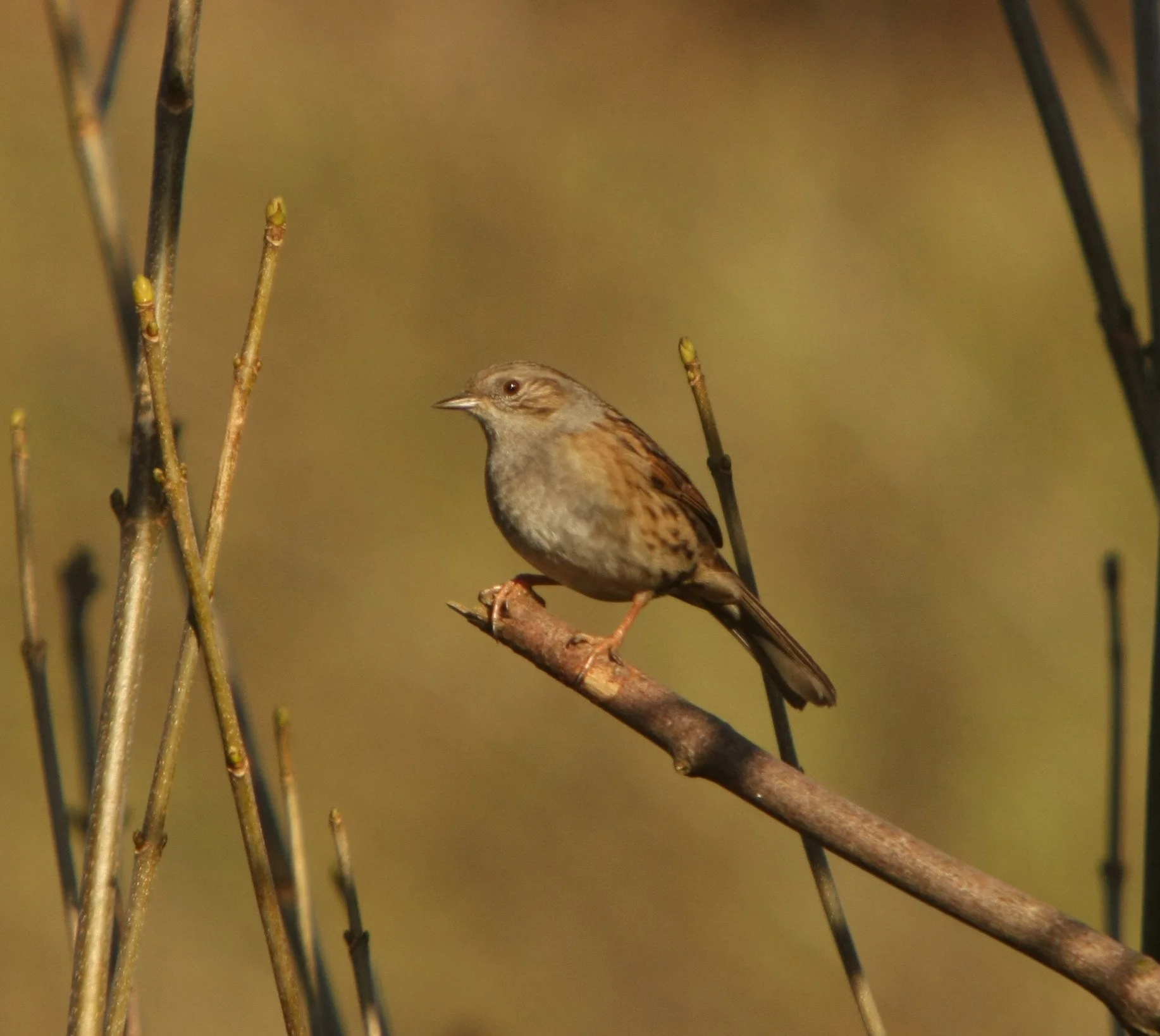Cuckoo
By Daniel Butler, author and forager
The joy of foraging has to include the sights and sounds one encounters while searching for something else. Take this morning: while looking for St George’s mushrooms, I was bombarded by our most instantly recognisable spring bird call.
Often heard, but rarely seen - the male cuckoo
Picture: BTO
While most of us would be hard-pressed to tell a robin from a wren by their trilling calls, even the greatest urbanite can instantly recognise a cuckoo. The iconic repetitive song is actually the male’s territorial call, while the female’s bubbling cry sounds more like a curlew and there is also a chattering alarm similar to that of a magpie.
These mid-sized, grey birds, are shy creatures, with a dashing, hawk-like flight, meaning males are easily mistaken for sparrowhawks while the more rufous females can resemble kestrels.
A flying cuckoo is easy to confuse with a female sparrowhawk
Picture: Author’s own
Song aside, cuckoos are of course infamous for being that rarity: a brood parasite. Rather than go to all the effort of building a nest and rearing a clutch of their own like other birds, females lay a single egg in the nests of up to 25 victims.
As soon as it hatches, the alien instinctively heaves everything else out of its stolen home, manoeuvring other eggs and chicks into a special hollow between its shoulders. Once alone in its adopted home, its unwitting foster parents concentrate their entire attentions on the changeling. It capitalises on this with a particularly loud begging call and huge orange gullet with a yellow-rimmed gape. Both trigger a powerful feeding response – so powerful in fact, that they can even flag down neighbouring birds laden with food for their own chicks. Thanks to all the attention, the delinquent youngster fattens rapidly and often outgrows the nest, abandoning this for a nearby branch.
The dunnock (hedge sparrow) is one of the cuckoo’s main ‘prey hosts’
Picture: Author’s own
Dunnocks and reed warblers are their main hosts in lowland Britain, meadow pipits are preferred in upland areas, although flycatchers, wagtails and whitethroats also fall victim. That said, the battle is far from one-sided, thanks to a very high failure rate. More often than not the host spots something amiss and abandons its nest to start a fresh one before the ovular Trojan horse hatches.
Instinct plays a particularly important part in the cuckoo’s life cycle and this is why they are one of Britain’s most thoroughly studied species. Most birds ‘imprint’ on their parents, learning by observation what food to eat, where to nest, how to socialise with others, what to look for in a breeding partner and where to migrate. Naturally these opportunities are denied the young cuckoo, yet somehow they manage to overcome the hurdles.
Take the hairy caterpillars of bombycid moths which their foster parents will certainly not have fed them (most birds find these inedible – even poisonous – thanks to their irritant spines). Cuckoos have a renewable stomach lining, however, which protects them from any ill-effects and somehow the young birds manage to discover this for themselves soon after leaving the nest.
A few weeks later, they will set off on a solo flight to Africa and the following spring they will return to their natal site to find and mate with another cuckoo – a bird which they will have never seen or heard before. Instinct lies behind these marvels, but even here it is clear cuckoos have a particularly complex series of ‘programming sequences’ of this imperfectly understood mechanism.
Females do learn one thing from their foster parents, however: how to recognise their own victims. A cuckoo hatched in a meadow pipit nest will seek out pipits for its own breeding attempts and over time this has created host-specific ‘lines’ (gentes) of female cuckoos. Indeed, this is so advanced that the oviducts of every female cuckoo are genetically-programmed to colour her eggs to match those of the host. Males are less discriminating, however, and happy to mate with any female which ventures into their territory.


